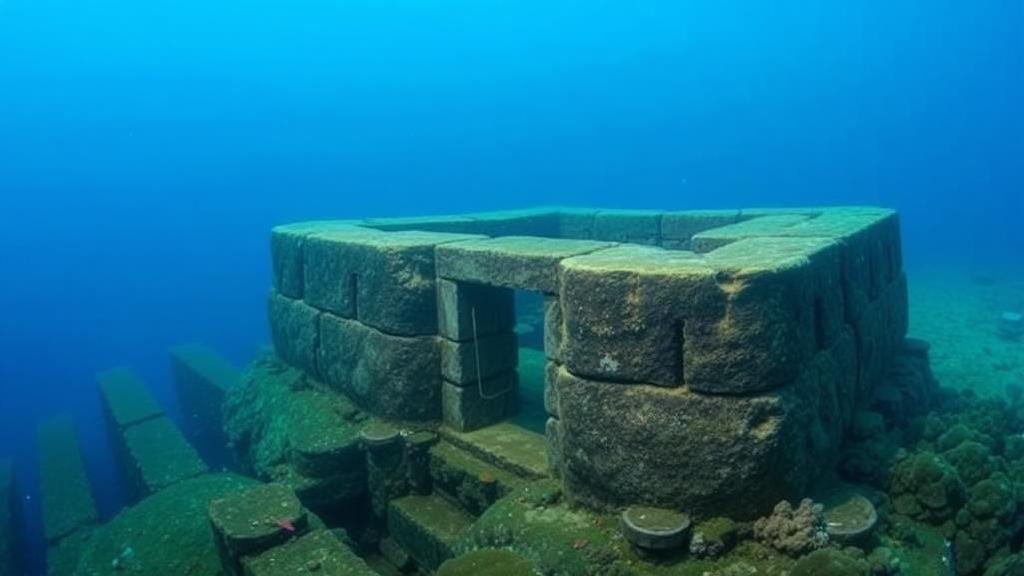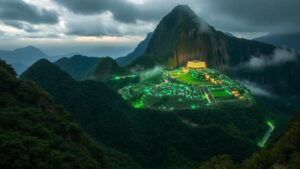Exploring the megalithic Yonaguni Monument beneath the seas of Japan.
Exploring the Megalithic Yonaguni Monument Beneath the Seas of Japan
Nestled off the coast of Yonaguni, Japan, lies a submerged structure that has captivated the imaginations of researchers and adventurers alike: the Yonaguni Monument. This underwater landmark, often considered as one of the most mysterious sites in the world, has sparked numerous debates regarding its origins and purpose. Is it a natural formation, or does it represent the remnants of an ancient civilization? This article delves into the intricacies surrounding the Yonaguni Monument, examining its historical significance, ongoing research, and future prospects.
A Brief Overview of the Yonaguni Monument
Discovered in 1987 by surfer Kihachiro Aratake, the Yonaguni Monument is situated at the eastern tip of the Ryukyu Islands, approximately 25 meters (82 feet) underwater. structure spans over 150 meters (490 feet) and features tiered terraces, straight edges, and right angles, leading many to ponder its artificiality.
- Depth: Approximately 25 meters (82 feet)
- Dimensions: Over 150 meters (490 feet) in length
- Location: Yonaguni, Ryukyu Islands, Japan
Theories Surrounding Its Origins
The discussion surrounding the Yonaguni Monument is polarized, with viewpoints diverging between natural formation and man-made structure. Critics often argue that the monuments features align closely with natural geological products, particularly due to the areas tectonic activity. The uplift of these formations could explain the monuments flat surfaces and angular shapes.
On the other hand, proponents of the man-made theory point to the following characteristics:
- Terraces resembling steps or platforms
- Wide, flat surfaces indicative of construction
- Right angles within the structure suggesting human design
Perhaps one of the strongest arguments for its artificiality comes from the work of geologists and archaeologists, such as Dr. Masaaki Morimoto, who have suggested that if the structure is indeed man-made, it could date back to 10,000 B.C. at the end of the last Ice Age, when sea levels were much lower.
Historical Context and Cultural Significance
Understanding the potential historical context of the Yonaguni Monument requires a glance at the broader narrative of human civilization in the region. The Ryukyu Islands are known for their rich maritime history, dating back thousands of years. This area served as a nexus for trade and cultural exchange amongst various Asian cultures.
If the Yonaguni Monument is indeed a remnant of an ancient civilization, it could redefine knowledge surrounding the technological capabilities of pre-literate cultures. The possibility of underwater settlements suggests that sea-level rise dramatically altered human habitation patterns, prompting a need for further archaeological investigation.
Scientific Investigations and Ongoing Research
Research on the Yonaguni Monument remains a hotbed of inquiry, as marine archaeologists, geologists, and divers actively engage in exploring its secrets. Underwater surveys using sonar technology, sediment analysis, and direct excavation–all crucial to piecing together the monuments narrative–have been implemented.
Key findings include:
- Presence of tools and artifacts around the site, hinting at human activity.
- Scientific studies that analyze the nature of stone formations, providing insights into their geological origins.
- Mapping efforts that aim to document and preserve the structure amidst environmental changes.
Recently, a collaborative effort by Japanese institutions aims to create an underwater archaeological park, a testament to the global interest in this submerged treasure.
The Future of Yonaguni Monument Research
As technology advances, so too does the methodology of underwater archaeological research. Techniques such as 3D mapping and lidar scanning are poised to provide more clarity regarding the monuments origins and its potential connections to human history.
Also, the growing awareness of climate change and its impact on underwater environments underscores the urgency of these studies. Protecting the Yonaguni Monument from potential damage due to changing ocean currents and rising temperatures is becoming increasingly critical.
Actionable Takeaways
For enthusiasts and researchers alike, the Yonaguni Monument presents a compelling case for interdisciplinary study, blending geology, archeology, and cultural studies. Here are ways to engage with this enigmatic site:
- Join educational tours or dive excursions to witness the monument firsthand.
- Stay informed about ongoing research through academic publications and documentaries.
- Support preservation efforts that aim to protect this unique underwater structure.
Whether you view the Yonaguni Monument as a natural marvel or a remnant of an ancient civilization, its allure lies in its mystery and the questions it raises about humanitys past. As investigations continue, we may one day unravel its secrets–or perhaps discover even more astonishing truths buried beneath the waves.



